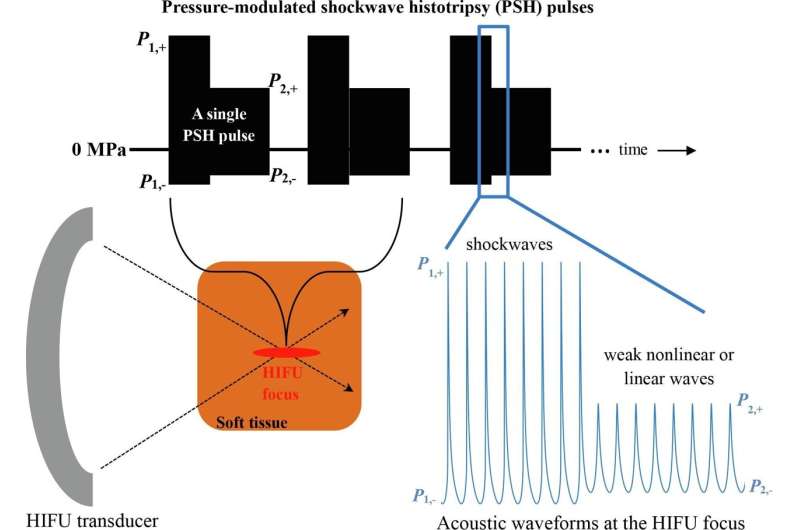Development of precision focused ultrasound surgery technology that destructs only the desired tissues

There are ongoing efforts to use ultrasonic effects with non-invasive properties to replace existing surgical procedures. Focused ultrasound-based bio-tissue destruction technology, which can mechanically fractionate the surrounding bio-tissue using a powerful bubble (cavitation) generated at a short time of approximately 1/100th of a second at the ultrasound focal point, has the advantage of allowing real-time cavitation analysis to monitor the treatment process and a shorter treatment time than the traditional HIFU method, which burns tissues with heat.
According to the Korea Institute of Science and Technology, Dr. Pahk, Ki Joo of the Bionics Research Center has developed a new ultrasound surgery technology that can more precisely and finely fractionate biological tissue using pressure-modulated focused ultrasound (KIST, director Yoon Seok Jin). This new technique is known as Pressure-modulated shockwave histotripsy.
Dr. Pahk was the first in academia to discover the principle of shock scattering by a boiling bubble in the existing focused ultrasound tissue destruction technology in which secondary bubbles are simultaneously generated not only at the ultrasound focal point area but also around it . Though existing focused ultrasound surgery technology has the advantage of being able to mechanically destruct biological tissues, the shock scattering effect reduces precision and makes it difficult to remove tissues or tumors that are close to major organs and blood vessels.
Dr. Pahk devised a method to change the acoustic pressure at the ultrasonic focal point to overcome these limitations. He discovered that changing the focal acoustic pressure momentarily could control the motility of the bubbles without the shock scattering effect, and thus more precisely destroy the biological tissue, immediately after bubbles are generated at the ultrasonic focal point. He performed acoustic simulations, high speed camera experiments with tissue phantoms, and animal experiments to demonstrate its feasibility.
It was confirmed that by adjusting the acoustic pressure, vapor bubbles with sizes ranging from tens to hundreds of microns could be generated at the ultrasonic focal point without the effect of shock scattering, and that the bubbles could be controlled and adjusted to last for a set period of time. According to the simulation performed by the research team, the reason for this is that the scattered acoustic pressure is lower than the pressure at which the shock scattering effect begins to occur. During the animal testing stage, it was also discovered that bio-tissue can be finely fractionated with a high degree of precision, which is far more precise than existing focused ultrasound technology at the focal point.
Source: Read Full Article



